Alfred
Posts: 6685
Joined: 9/28/2006
Status: offline

|
Gentlemen and Lady,
This month I've had a very limited presence on the forum because I have been drafting a guide as to how ship repairs are handled in the game. In this task I have been greatly assisted by the feedback provided by Bullwinkle. You can all thank him for the guide almost doubling in size from the initial draft.
In my view, at least 98% of ship repair questions asked are answered by a careful reading of the guide. These questions almost always result from player errors/misunderstandings of the repair process.
SHIP REPAIR 101 GUIDE
1. Introduction
Repairing ships in AE is more complicated than it was in classical WITP. What is involved in repairing ships is detailed at length in section 14.2 (pages 239-249) of the manual. Notwithstanding the wealth of information contained in the manual, questions are regularly posted on the forum seeking clarification.
This guide is intended to represent the subject in a manner more easily understood. To that end I introduce in the guide some terminology not officially sanctioned but which I believe better explains a concept.
The guide also presents much of the relevant data in tables. After each table an exemplar is provided to assist in comprehending the table.
Although repairing ships is now more complicated, there is no necessity for players to immerse themselves in the minutiae of the repair process. The hidden “repair manager” (discussed in section 14 below) does its work independently under the hood quite competently. All that a player who wishes to avoid micromanaging the repair process needs to know are the parameters which the “repair manager” independently works with.
2. Glossary of repair abbreviations
Below is a list of repair abbreviations used in this guide. The concept they each represent individually is explained when it is first introduced in the guide. The abbreviations are collected here for ease of reference. To make it easier to identify terminology introduced by me and which is not officially sanctioned in the game manual, I have placed an asterisk (“*”) in this glossary to denote it is my terminology.
• IR* - integrity repair
• IRP* – integrity repair point
• POD – point of damage
• RW* – repair worker
• WR – weapon repair
• WRP – weapon repair point
3. Correcting common player misunderstandings of the repair process
Before proceeding to discuss the “repair process” in detail, I think it is useful to correct at the start of this guide, some very common player misunderstandings of what is involved in the “repair process”. Player misunderstandings of the “repair process” inhibit a proper understanding the “repair process”. Below I list the true parameters which correct the most common player misunderstandings of the “repair process”.
• The process of repairing ships does not consume supply, there is therefore no need for “tenders” to be loaded with supply when they are being used as “repair ships”
• Although more detailed now and closer to real world considerations, the “repair process” remains abstracted, therefore do not transfer to the game your own real world experience
• Unused repair capabilities are not carried over to the next turn, it is therefore a case of use it this turn or lose it
• Damage is categorised as “normal” or “major”, both damage categories commonly being present
• The cost to repair “major” damage is exactly the same as the cost to repair “normal” damage
• Technically, weapons are not damaged but destroyed hence there is no “normal” or “major” damage to weapons
• Choose your “repair mode” carefully, undertaking repairs in a shipyard is not always the best option,
• Do not confuse “damage control” with the ship “repair process”, they are two different concepts
• Fire fighting is a “damage control” issue, not a “damage repair” issue
• Ships on fire will not repair offline until the fires are extinguished and there is a risk of additional damage caused by raging fires
• Do not confuse the ship “upgrade process” with the ship “repair process”, they are two different concepts
4. Repair modes
Repairs are made to ships which are in one of the following “repair modes”.
• Readiness
• Pierside
• Repair ship
• Shipyard
“Readiness mode” is the game default mode. In “readiness mode” a ship remains in a state of combat readiness. The ship can be in a task force or disbanded in a port (includes an anchorage which is a port sized 0). Generally speaking this is by far the least efficient “repair mode” (see sections 9 and 12 below for justification for this claim).
“Pierside mode” is when a ship is taken offline and is not available for combat. The ship must be disbanded in a port (includes an anchorage which is a port sized 0), it cannot be in a task force. Generally speaking this is the most efficient “repair mode” for “normal” damage (see sections 9 and 12 below for justification for this claim). Repairing “major” damage is not always possible in this “repair mode”.
“Repair ship mode” is when a ship is taken offline and is not available for combat. The ship must be disbanded in a port (includes an anchorage which is a port sized 0) and the port must also contain an appropriate disbanded “repair ship”. This “repair mode” is useful to repair “major” damage which often cannot be repaired employing only “pierside mode”. “Repair ships” are mobile repair facilities and therefore provide a degree of flexibility to effect repairs close to the frontline.
“Shipyard repair mode” is when a ship is taken offline and placed in a shipyard. This “repair mode” is only available (a) in ports with a shipyard, and (b) if the ship can fit into the shipyard. To fit into a shipyard the ship’s tonnage must not exceed the (shipyard size x 1000). The total tonnage which a shipyard can work on simultaneously is also (shipyard size x 1000). It is not possible to place a ship into a shipyard whose tonnage exceeds (shipyard size x 1000) but it is possible to have more aggregated tonnage assigned to “shipyard repair mode” than (shipyard size x 1000). In the event of too much aggregated tonnage, the ships over the shipyard limit are placed in a queue by the “repair manager” and enter the shipyard as repaired ships are moved out. Judicious use by the player of the “repair priority” order affects the queue order (see section 13 below).
Ships in the three offline repair modes (“pierside”, “repair ship” and “shipyard”) normally experience a 3 day delay before they can be returned to combat status and formed into task forces.
A ship can be placed in any of the four “repair modes” via either the “individual ship” screen or the “ships in port” screen which has a button at the bottom of the screen named “manage ships under repair”. I very strongly recommend that players only ever use the second method as the complete picture of the repair situation at that location is only provided via the “manage ships under repair” screen.
5. Damage Areas
Ships sustain damage to four areas:
• Weapons
• Flotation
• Engine
• System
For ease of reference, unless specifically identified individually, from hereon I will group together into a single area, the areas of flotation, engine and system and refer to them as the “integrity area”. Repairs to this consolidated area will subsequently be referred to as “integrity repairs” (“IR”).
“Flotation damage” is damage incurred to the hull. Once flotation damage reaches 100, the ship sinks.
“Engine damage” is damage incurred to the propulsion/power plants. The greater the engine damage incurred, the slower top speed a ship can make.
“System damage” is damage incurred to the top side structure.
“Weapon repairs” (“WR”) are processed differently from how repairs are processed for IR. Compared to IR, WR is relatively simple and straight forward. This is because technically the game does not damage weapons, instead weapons are destroyed. On the ship screen a damaged weapon is in red and you will note there are fewer weapons than there were before the weapon was damaged. WR is therefore not about repairing a weapon mount or gun barrel but substituting in a new mount or gun barrel for the destroyed one.
6. Major damage
Part of the additional complexity of IR is that “integrity area” damage comes in two flavours, “normal” or “major”. There is no similar classification for “weapon damage” because the distinction is meaningless in the context of something which has been destroyed.
Essentially there is no difference between a “point of damage” (“POD”) which is “normal” and a POD which is “major”. A ship with no “major” flotation damage but with 56 “normal” flotation POD is in much greater risk of sinking than a ship with only 28 “major” flotation POD. The only real difference between “normal” and “major” damage is that there are much stricter requirements to be met for the repair of “major” damage. See section 11 below for the stricter requirements involved to repair “major” POD.
All POD are “normal” unless “major” POD are identified. A ship which is shown as having only:
23 flotation damage (3 major)
Should be read as having a total of only 23 POD of which 20 are “normal” flotation POD plus 3 “major” flotation POD.
7. Cost of Repairs
Ship repairs are paid for in the currency of “repair points”. The actual amount it will cost in “repair points” to effect a repair is dependent on whether it is a WR or an IR. Accordingly I separate “weapon repair point” (“WRP”) from “integrity repair point” (“IRP”).
For weapons, the actual cost in WRP is dependent on the type of weapon which needs to be repaired. A sliding scale cost is applicable to guns, all other weapon types have a fixed cost dependent on weapon type. These costs are detailed in table A.
Table A: Weapon Repair Costs
Rockets (all types) cost 50 WRP
Radars and ASW detectors cost 90 WRP
Mines and Torpedoes cost 120 WRP
Guns cost WRP equal to the effect value of the gun
Exemplar A: the 16in/50 Mk 7 gun has an effect of 2700, hence the cost in WRP = 2700. The WRP cost to repair a 20mm Oerlikon AA gun is 15.
As can be seen, the WRP cost for weapons is quite easy to determine in advance. Repairing guns (which are all other weapons other than rockets, radars/ASW detectors, mines and torpedoes) is slightly more complicated in as much the repair bill is affected by the size of the gun, represented by the effect of the gun. Bigger guns consume more WRP. Full details of the effect of each gun are found in the “in game” ship database (short cut key <V>).
All IR have a fixed cost of 100 IRP to remove 1 POD. Thus if a ship has 12 flotation, 6 engine and 9 system damage, it has a total of 27 POD and therefore the total number of IRP needed to fully repair the ship will be 2700.
In terms of IRP costs, repairing “major” damage is not more expensive than repairing “normal” damage. You still need 100 IRP to remove 1 major POD. However the conditions to be met for the repair of “major” POD is much more restrictive than those for repairing “normal” POD. Section 11 deals with the expertise needed to remove “major” damage.
8. Weapon Repair Point Sources
WRP are generated by only three sources:
• Shipyards
• Tenders
• Ports
These WRP are generated at a different rate than IRP are generated. Hence it is possible for a ship to have all of its IR damage repaired but still have its weapons unrepaired because the IR were effected at a location which lacked suitable facilities for WR.
It is very important to realise that WRP do not accumulate over turns. There is no WRP stockpile. A weapon will not be repaired if the ship has been sent to a WRP source which each turn generates fewer WRP than the amount needed to repair the weapon.
Table B: WRP generated by shipyards, ports and tenders for weapon repairs
(Shipyard size x 20) [NB: there is a maximum cap of 300 on shipyard size]
(Tenders generate a fixed 250 WRP)
(Port size x 25)
Exemplar B: As seen in table A, the WRP cost to repair a single 16in/50 Mk 7 gun is 2700. Only a shipyard sized 135 will generate sufficient WRP in a turn to repair a single 16in/50 Mk 7 gun. If the damaged weapon were instead a torpedo which requires only 120 WRP, the repair could be effected at a shipyard sized 6 or alternatively by an appropriate tender for the type of vessel or alternatively at a port sized 5.
Note the WRP listed in table B are from undamaged facilities. A shipyard sized 10 which generates 200 WRP if undamaged, will only generate 100 WRP if the shipyard is 50% damaged. A port sized 4 which is 75% damaged will generate only 25 WRP instead of the 100 WRP it would generate if not damaged.
9. Integrity Repair Point Sources
IRP are generated by five sources:
• Shipyards
• Ports
• Repair ships (includes Tenders for their respective ship types)
• Naval support squads
• Ship crews
Some of these IRP sources will pool together their generated IRP at the same location for use in the same turn to ships in certain “repair modes”. Others do not. Just like WRP, unused IRP are not carried forward to the next turn but the progress work made in one turn to partially remove a POD is carried over to the next turn. “Repair ships” must be disbanded in the port in order to generate any IRP.
IRP generated by shipyards are expended only on ships in “shipyard repair mode”, undergoing repair in the shipyard. Ships in “shipyard repair mode” only use IRP generated by the shipyard, they do not benefit from IRP generated by other sources. Repairs to ships not in “shipyard repair mode” do not benefit from any IRP generated by the shipyard.
Ships in “repair ship mode” will benefit only from IRP generated by the relevant “repair ships” (see tables F and G below for the relevant “repair ship”). When there are ships in “repair ship mode”, IRP generated by repair ships are not expended on ships in any other repair mode. However, if there are no ships in “repair ship mode”, the IRP generated by “repair ships” will be directed automatically by the “repair manager” to ships in “pierside mode” only, they will not be expended on ships in “readiness mode”.
The IRP generated by ports and naval support squads are pooled together and are expended each turn on ships in “pierside mode” or “readiness mode”.
Ship crew generated IRP are expended only on their own ship which can be in either “pierside mode” or “readiness mode”.
To simplify the presentation of the amount of IRP generated by the five sources, I have split them into three different tables.
Table C: IRP generated by shipyards, naval support squads and crews
(Shipyard size x 10)
(Naval Support Squads/2) minus (Damage/5) for repairing ships in “pierside mode”
(Naval Support Squads/3) minus (Damage/5) for repairing ships docked in “readiness mode”
(Crew Experience/8)
Exemplar C: A size 10 shipyard will generate 100 IRP each turn. It therefore can remove a single POD each turn from a single ship in “shipyard repair mode”.
Table D: IRP generated by ports
Port size 1 generates 8 IRP
Port size 2 generates 27 IRP
Port size 3 generates 27 IRP
Port size 4 generates 38 IRP
Port size 5 generates 50 IRP
Port size 6 generates 63 IRP
Port size 7 generates 77 IRP
Port size 8 generates 92 IRP
Port size 9 generates 108 IRP
Port size 10 generates 125 IRP
Exemplar D: A single ship in “pierside mode” at a port size 9 will receive 108 IRP each turn which is more than what is required to remove a single POD each turn. If the ship were in “pierside mode” at a port size 5 it would receive only 50 IRP which would be applied towards removing a POD and the progress achieved (together with any assistance from the crew and naval support, see table C above) would be carried over to the next turn.
Table E: IRP generated by repair ships
(Undamaged, disbanded, unused tender generates 83 IRP)
(Undamaged, disbanded, unused ARD generates 100 IRP but used only for flotation repair on one ship at a time)
Exemplar E: Two disbanded in port AS will generate a combined 166 IRP which will be applied only to a submarine in “repair ship mode”, any other additional submarines in port but in “pierside mode” will gain no benefit from these IRP. However, if there are no submarines in “repair ship mode” but only in “pierside mode” then the IRP generated by the AS will be automatically applied by the “repair manager” to the submarines in “pierside mode”. Were the submarines to be in “readiness mode” they would not benefit from these IRP.
As noted in section 8 above regarding WRP, the IRP listed in tables C-E above are from undamaged facilities. A shipyard sized 10 which generates 100 IRP if undamaged, will only generate 50 IRP if the shipyard is 50% damaged. A port sized 4 which is 75% damaged will generate only 9.5 IRP instead of the 38 IRP it would generate if not damaged.
The reason why I stated in section 4 above that “pierside mode” is generally the most efficient repair mode for IR (and “readiness mode” is generally the least efficient) can now be seen. Assume a destroyer has a total of 45 “normal” POD. It is in “pierside mode” at a size 5 port and there are no other ships in port undergoing IR. Present at the port are 40 naval support squads. The destroyer’s crew experience is 80. Also disbanded in the port is a single undamaged AD and there are no other relevant ships in “repair ship mode”. Co-located is a shipyard size 12. This single destroyer will receive each turn the following IRP from the identified sources:
• 50 IRP from the port [see table D, port size 5]
• 11 IRP from the naval support squads [see table C, (40/2) – (45/5)]
• 10 from crew experience [see table C, (80/8)]
• 83 IRP from the AD [see table E]
Thus the aggregated IRP expended on this destroyer in “pierside mode” is 154 IRP. That amounts to a single POD being removed entirely and 54% progress made towards removing (carried over to the next turn) another POD. If the destroyer were in “readiness mode” it would receive only an aggregated 64.3 IRP [see table C and exemplar E for the explanation in the IRP reduction]. If it were in “shipyard repair mode” it would receive only the 120 IRP generated by the size 12 shipyard.
10. Repair ship capabilities
In preceding sections reference has been made to “repair ships” and tenders. Many players are confused about the exact role of these ships for most “repair ships” are in fact tenders. Tenders are a dual role ship. One of their roles is to rearm relevant ship types. That role is not discussed in this guide. Their other role, that of repairing relevant ship types, is discussed in this guide. In this section of the guide I provide two tables, one for the capabilities of “repair ships” to repair “normal” integrity POD of combat vessels and another for their capabilities in repairing “major” integrity POD of combat vessels.
Table F: Normal integrity damage of combat vessels repairable by repair ships
AD – DD/DE/APD/DMS/DM/AVD/E/TB/KV/PF/PB/PC/SC/AM/ML
AG – DE/APD/DMS/DM/AVD/E/TB/KV/PF/PB/PC/SC/AM/ML/HDML/MGB/YP/YMS/AMc
AGP – PT/MTB/MGB/PB/PC/SC/AM/ML/HDML/YP/YMS/AMc
AR – all ship types
ARD – flotation damage only to all ship types but only 1 ship at a time is repaired
AS – SS/SST/SSX
Exemplar F: A mineweeper (AM) with 39 “normal” engine POD will receive IRP from an AD, AG, AGP or AR. A submarine with the exact same damage will receive IRP only from an AR or AS.
Table G: Major integrity damage of combat vessels repairable by repair ships
AD – PB/PC/SC/AM/ML/HDML/MGB/YP/YMS/AMc
AG – PB/PC/SC/AM/ML/HDML/MGB/YP/YMS/AMc
AGP – PB/PC/SC/AM/ML/HDML/MGB/YP/YMS/AMc
AR – PB/PC/SC/AM/ML/HDML/MGB/YP/YMS/AMc
AR – all ship types sized DE and above provided the aggregated major IR damage does not exceed 5 POD
ARD – flotation damage only to all ship types but only 1 ship at a time is repaired
Exemplar G: A heavy cruiser with 3 “major” engine POD will be repaired by an AR. If it had 6 “major” engine POD, it could not be repaired by the AR.
11. Expertise required to repair major damage
Section 7 mentioned that it does not cost more IRP to remove “major” POD than it does to remove “normal” POD. What is different between the two damage categories is that specialised expertise is needed to undertake “major” IR. This expertise is generally only found in:
• Shipyards
• Some repair ships
• Ports sized 7
Any shipyard can remove any “major” damage provided the vessel fits into the shipyard in “shipyard repair mode”.
“Repair ships” are restricted to removing “major” damage only as listed in table G.
Ports sized 7 can repair up to 5 “major” flotation or engine POD on ships which are in “pierside mode”.
Late in the AE design process, a decision was made to relax the parameters for repairing “major” damage on small vessels (both combat and merchantmen). Players who only play the stock scenarios are most unlikely to see any practical benefit from this relaxation. However, players who play the DaBabes scenarios will probably derive some benefit from the relaxation and therefore the following table is provided mainly for their benefit. Those who stick to only the stock scenarios may decide the additional complexity is of little practical value to them and may safely skip this table.
Table H: Sundry expertise locations for repair of major damage
Merchant ships sized 1 to 1000 tons, where (port size x 100) = merchant ship tonnage
Barges, where port size = 4 or the repair ships AG/AGP/AR are disbanded in the port
Midget subs with “major” engine damage only, where port size = 6 or the repair ships AR/AS are disbanded in the port
Small craft ships up to 499 tons, port size = 4
Small craft 500 to 1000 tons, where port size = ship tonnage/100
Exemplar H: The ships listed in this table only benefit if they are disbanded in the port.
12. Market supply and demand forces impact upon labour of repair workers
Many players who in their games already carefully weigh up the factors presented to date in this guide but then become perturbed as to the length of time their ships spend in a repair mode, are probably overlooking what I refer to as the market supply and demand forces impacting upon the available labour to work on repairing ships.
Just as there are docking limits for task forces, and ship loading/unloading limits, there is also a limit on how many ships can be worked on at a port, either in “pierside mode” or “readiness mode”, in each 24 hour period. This is essentially an abstraction of supply/demand forces on what I term to be the “repair workers” (“RW”). Note the game manual does not actually employ the term RW instead it uses the terms “Port Assist Operations” to represent the supply of RW and “Port Assist Cost” to represent the demand from ships for RW.
Basically there are only so many RW which can be utilised in a port in each 24 hour period. The player needs to understand IRP is the currency used to pay for the work undertaken by the RW. If there is full employment of RW at the port, any additional ships will not be repaired as there are no unemployed RW available to carry out the repairs on these additional ships. IRP and RW are separate but closely entwined concepts.
RW are assembled as follows. The size of a port determines how many RW turn up seeking employment. This is referred to in the game as the “Port Assist Operations” and represents the supply of labour. Each damaged ship in the port (whether in “pierside mode” or “readiness mode”) undergoing IR employs a certain number of RW. This is referred to in the manual as the “Port Assist Cost” and represents the demand for labour. The demand for labour is modified by the “repair priority” (see section 13 below) assigned to a ship by the player.
For those interested in the minutiae the following tables are provided.
Table I: Supply of repair workers seeking employment
Port size 1 generates 8 RW
Port size 2 generates 34 RW
Port size 3 generates 81 RW
Port size 4 generates 152 RW
Port size 5 generates 250 RW
Port size 6 generates 378 RW
Port size 7 generates 539 RW
Port size 8 generates 736 RW
Port size 9 generates 972 RW
Port size 10 generates 1250 RW
Exemplar I: (see discussion following table J)
Table J: Ship demand for repair workers for ships in “normal repair priority”
Ship in “pierside mode”, demand = [(damage x 10) + (Ship tonnage/500)]
Ship in “readiness mode”, demand = [(damage x 20) + (Ship tonnage/500)]
Exemplar J:(see following discussion)
To illustrate in simple terms how supply and demand for RW plays out, consider the following situation. A 10000 ton cruiser has a total of 43 normal IR POD and is in “pierside mode” at a port size 8 with no other ships under repair. The cruiser’s “repair priority” is “normal” (see section 13 below for the effect if a different “repair priority” were assigned to the cruiser).
From table I, we can see the total supply of RW is 736. From table J, we can calculate the demand from this single ship for RW is:
(43 x 10) + (10000/500) = 450 RW
If the cruiser were in “readiness mode”, the equation then becomes:
(43 x 20) + (10000/500) = 880 RW
Clearly if the IR is undertaken in “readiness mode”, not only is there full RW employment, in fact there is a shortage of RW. When there is a shortage of RW, the rate of repairing the integrity damage is accordingly reduced to match the percentage of RW able to work on the ship.
13. Integrity repair priority
Players can elect the level of “repair priority” to be accorded a ship. There are four “repair priority” modes a ship can be placed in. These are:
• Low
• Normal
• High
• Critical
There is however a trade off for assigning a higher “repair priority”. Think of “high priority” and “critical priority” as representing overtime for the RW.
“High priority” sees IR undertaken at 1.667 times the normal rate (provided there are sufficient IRP available at that location to pay for the worked overtime) but the trade off is that the ship imposes 2 times its normal RW utilisation rate.
“Critical priority” sees IR undertaken at 2 times the normal rate (again provided sufficient IRP are present for the worked overtime) but the trade off is 4 times the normal RW utilisation rate is incurred.
“Low priority” sees IR undertaken at the same rate as “normal priority”. The difference with “normal priority” is a ship on “low priority” is placed at the end of the queue and is only worked on if all the ships ahead of it have been attended to. Use “low priority” where you want to favour some other ships but are not willing, or unable, to pay the overtime rates.
14. What the repair manager actually does
What cannot be changed by the player and is fully under the control of the “repair manager” is the order in which the individual IR is undertaken. The “repair manager” prioritises the RW and the expenditure of IRP on the basis of damaged area and degree of the damage.
The first priority of the “repair manager” is to work, in descending order on:
• Flotation
• Engine
• System
The second priority is to work until damage in an area is reduced to a commensurate damage level in the other areas. This work is done within the following bands.
• 90+
• 75-89
• 60-74
• 45-59
• 30-44
• 15-29
• 8-14
• 4-7
• 2-3
• 1
In practice this means that a ship with 77 flotation, 48 engine and 17 system damage will see the “repair manager” directing the RW to work on the flotation damage until it is reduced to 45 at which point the RW are redirected to work on the engine damage until it is reduced to 45. At that point the RW restart work on flotation until it is reduced to 30, then switch over to work again on engine until it is reduced to 30. At that point the process starts over again with the RW on flotation until it is reduced to 15, then engine until it is reduced to 15 and only now do the RW start to work on reducing the system damage down from 17 to 15. When that is accomplished the RW again work on reducing flotation to 8, engine to 8, system to 8 and so on.
Bear in mind, this is “usually” how the “repair manager” approaches the task. The “repair manager” favours flotation damage over engine and system. It also treats “normal” damage a bit differently from “major” damage. Don’t even think about asking me what impacts upon the “repair managers” adoption of the “usual” or “normal/major” damage priority, that information is one of those under the hood, known only to the devs, situation. The entire process is also subject to random die rolls. Well it wouldn’t be a Gary Grigsby game if die rolls didn’t intrude.
15. Summary
Repairs are paid for by "repair points". These "repair points" are different depending on whether it is "weapon" or "integrity" damage being repaired. The sources for these "repair points" are varied and different and a repair will not occur unless the player arranges for the damage to be repaired at an appropriate facility.
The rate at which repairs are made is determined by the presence of both "repair points" and "repair workers" to do the work. The supply of labour to undertake repairs is essentially fixed but the demand for that labour is subject to player input.
Edit: corrected typo in exemplar D
Alfred
< Message edited by Alfred -- 12/22/2011 4:52:49 AM >
|
 Printable Version
Printable Version






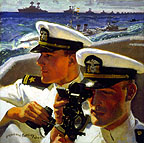



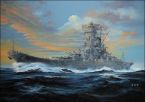



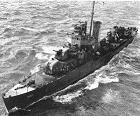

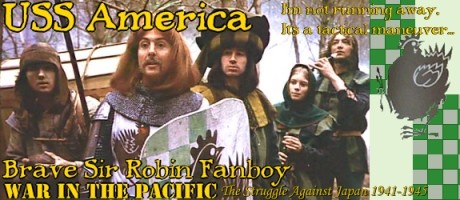



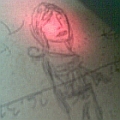







 New Messages
New Messages No New Messages
No New Messages Hot Topic w/ New Messages
Hot Topic w/ New Messages Hot Topic w/o New Messages
Hot Topic w/o New Messages Locked w/ New Messages
Locked w/ New Messages Locked w/o New Messages
Locked w/o New Messages Post New Thread
Post New Thread